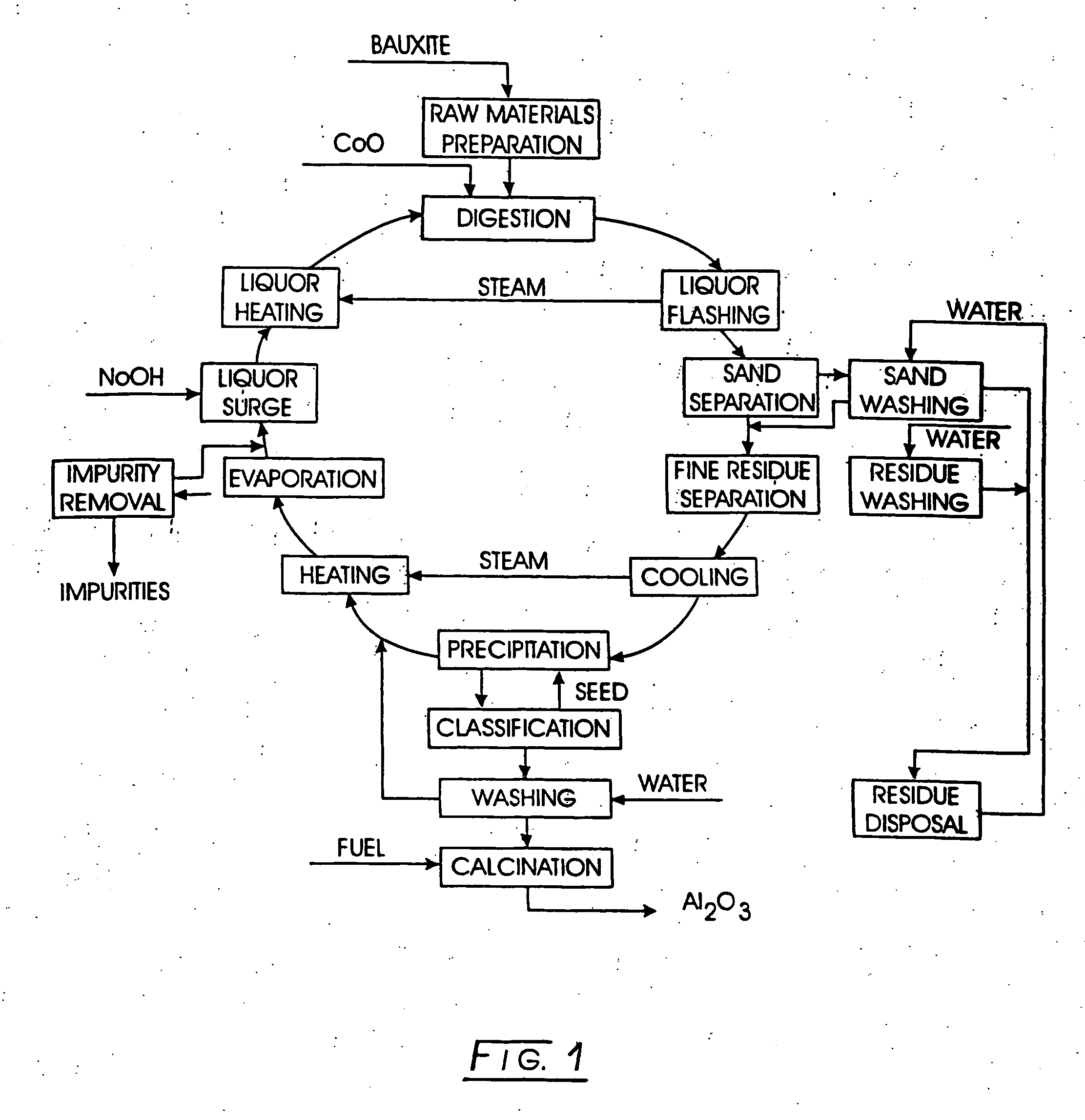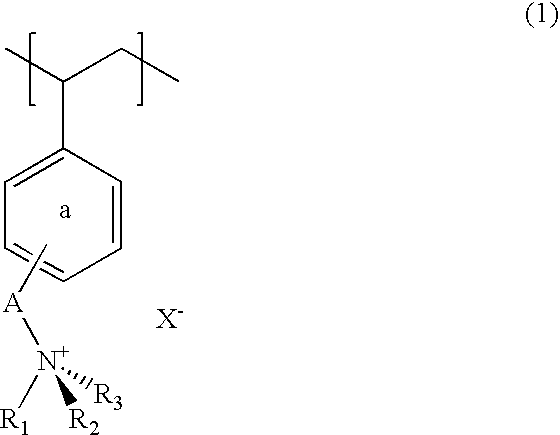Process for reducing contaminants in condensate resulting from the conversion of bauxite to alumina
a technology of bauxite and condensate, which is applied in the direction of filtration treatment, multi-stage water/sewage treatment, separation process, etc., can solve the problems of deleterious contaminants, inability to successfully remove contaminants from process water and condensates, and inability to achieve effective removal methods. achieve the effect of rapid treatment tim
- Summary
- Abstract
- Description
- Claims
- Application Information
AI Technical Summary
Benefits of technology
Problems solved by technology
Method used
Image
Examples
examples
[0065] While the invention has been described with reference to a preferred embodiment, those skilled in the art will understand that various changes may be made and equivalents may be substituted for elements thereof without departing from the scope of the invention. In addition, many modifications may be made to adapt a particular situation or material to the teachings of the invention without departing from the essential scope thereof. Therefore, it is intended that the invention not be limited to the particular embodiment disclosed as the best mode contemplated for carrying out this invention, but that the invention will include all embodiments falling within the scope of the appended claims. In this application all units are in the metric system and all amounts and percentages are by weight, unless otherwise expressly indicated.
example
Removal of Contaminants from Condensate Generated by the Bayer Process for Producing Alumina
[0066] This example illustrates how the process is used to remove contaminants from the digester process water (DPW) and the evaporator process condensate (EPC), generated by the Bayer process for producing alumina. The alumina is produced from bauxite by the Bayer process as shown FIG. 1. The temperature of the DPW is from about 80° C. to about 100° C. and the temperature of the EPC is from about 80° C. to about 100° C. The flow rate for the condensate tested is approximately 60 GPM and tests are conducted for about a month. The sample is piped from the process and the purification took place done on-line.
[0067] Twenty ppm of MFC are added to samples of the DPW and the EPC. Ten seconds later, 15 ppm of TAC are added to the DPW and the EPC, which is treated with the melamine formaldehyde emulsion breaker. The condensate is then filtered using FILTER.
[0068] After filtration the condensate i...
PUM
| Property | Measurement | Unit |
|---|---|---|
| temperature | aaaaa | aaaaa |
| temperature | aaaaa | aaaaa |
| temperature | aaaaa | aaaaa |
Abstract
Description
Claims
Application Information
 Login to View More
Login to View More - R&D
- Intellectual Property
- Life Sciences
- Materials
- Tech Scout
- Unparalleled Data Quality
- Higher Quality Content
- 60% Fewer Hallucinations
Browse by: Latest US Patents, China's latest patents, Technical Efficacy Thesaurus, Application Domain, Technology Topic, Popular Technical Reports.
© 2025 PatSnap. All rights reserved.Legal|Privacy policy|Modern Slavery Act Transparency Statement|Sitemap|About US| Contact US: help@patsnap.com



